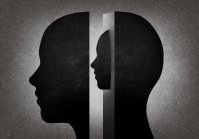With Student Trauma, It’s OK to Set Boundaries
Student trauma impacts teachers, too. Taking care of yourself isn’t a luxury—it’s a necessity.
Your content has been saved!
Go to My Saved Content.It’s probably not news to most teachers that nearly six out of 10 children have experienced trauma, according to a foundational study from the Centers for Disease Control and Prevention and Kaiser. As educators on the frontlines, teachers regularly encounter students who have experienced significant hardships in their homes and communities. But psychologists and mental health practitioners say that the impact of trauma goes beyond the kids and reaches into the lives of educators who work closely with them day to day.
This secondary form of trauma, known as vicarious trauma, can develop from a single event or over a period of time. To protect yourself from vicarious trauma, it’s important to understand its impact, recognize its symptoms, and develop preventive strategies to take care of yourself. We recently spoke with Micere Keels, an associate professor at the University of Chicago and founder of the TREP Project, a trauma-informed curriculum for urban teachers, on how to identify and navigate vicarious trauma.
Recognizing the Symptoms of Vicarious Trauma
According to Keels, the signs and symptoms of regular exposure to the traumatic experiences of others can look and feel a lot like emotional exhaustion or burnout. In working with students who are in pain, educators may experience emotional, physical, and relational symptoms, with many affected teachers emphasizing a kind of depression rooted in a reduced sense of personal accomplishment.
If, despite relative happiness in your personal life, you notice yourself regularly feeling sad, angry, anxious, or depressed, those feelings might be symptoms of secondary trauma that can quickly manifest as physical symptoms like headaches, stomach aches, constipation, or general drops in energy.
When left unattended, emotional symptoms can also affect personal relationships, both at home and in the workplace. Are you becoming irritable with your family? Are you isolating yourself from friends? Pay attention to changes in your behavior at work, as well. You may notice yourself feeling more detached from your colleagues and students or reacting more negatively to them. If you lack motivation, avoid specific students, or are chronically late, these could all be the effects of vicarious trauma.
Understandably, many teachers experience debilitating feelings of hopelessness and a reduced sense of personal accomplishment because they’re often presented with problems beyond their capacity and control. When confronted with critical problems affecting your students’ lives, it’s easy to feel both obligated to take action and overwhelmed with the task in front of you. With limited resources at your disposal, you can’t always fix your students’ problems.
In other words, you may feel like no matter what you do, you’re not doing enough for your students—you’re failing them.
Ways to Treat Yourself
What can you do to help yourself in that situation? While it’s best to use self-care practices preventively before symptoms get out of hand, the strategies below can be implemented at any time to help you mitigate the impact of secondary trauma.
Reduce professional isolation. Find colleagues on staff you can trust to talk out your frustrations and emotions. This will help you realize that you’re not alone in your experiences and that your struggles are not due to ineptitude—you just have a difficult job. You can also gain tips from peers on how they’ve navigated challenging situations with students while maintaining health and well-being.
Pursue opportunities for professional development (PD). One of the most challenging aspects of working with students who have experienced trauma is learning how to navigate their emotional outbursts and challenging behaviors in class. Educators have reported to Keels that “there is nothing more frustrating and makes you want to leave the profession more than knowing that what you’re doing is not working, but not knowing what to do differently.” If your district or school isn’t offering PD on trauma, look for local workshops, find online resources, or contact other schools.
The trauma-informed school Fall-Hamilton Elementary in Nashville, for example, developed a practice that benefits teachers—called “tap-in/tap-out”—that lets teachers text a colleague to cover their class for a few minutes when they need a break from a tense situation. Edutopia has previously shared strategies on how to prevent students from acting out in class, as well as how to calm a student who’s in the midst of an emotional outburst. A quick mindfulness activity, for example, can help calm yourself and the class after a student acts out.
Develop realistic expectations and set boundaries. Some of your students may need significant supports—food, guardianship, housing—but these needs are far beyond what you can provide as their teacher. Give yourself kudos for doing the best you can with the resources you have, and acknowledge that there are limits to what you can do.
It’s important to not only acknowledge your limits but to own your successes. You know the stories of the students whose lives you have touched—the students who return years after they’ve graduated to tell you that it was because of you that they went to college or became a teacher, the thank-you letters in your drawer, and the hugs from former students on the street. Listening to a student one-on-one—even if that’s the only support you can give—is also a success. Know that you’re impacting your students’ lives to the best of your ability, and that your best is enough.
